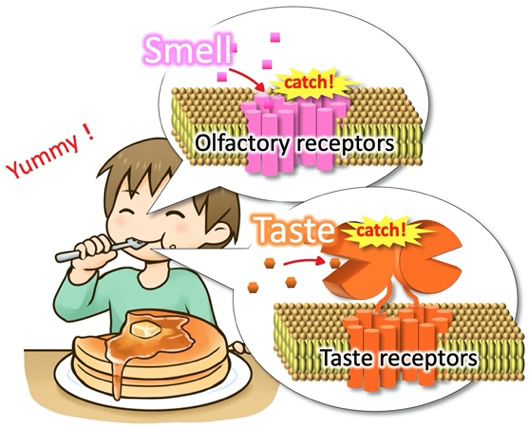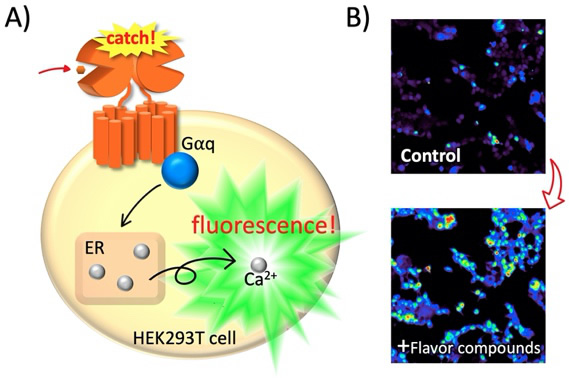Food Chemistry

- account_circleKeisuke ItoPhD, Assoc. Prof.
- account_circleYuko TeradaPhD, Research Asst. Prof.
- Website:https://dfns.u-shizuoka-ken.ac.jp/labs/foodchem/
- Mail:sukeito@u-shizuoka-ken.ac.jp
- Phone:+81-54-264-5543
Development of flavor compounds to design food having deliciousness and health
Flavor science and technology
The senses of taste and smell are especially important in perceiving food flavor. Taste and smell are also called chemical senses since these senses arise from chemical molecules. Our research focuses on the molecular basis of the flavor perception.
- 1. Application of cell-based assay of the chemosensory receptors in food flavor analysis
Quantifying the taste and smell of food is advantageous to the rational design of desirable flavor. Humans sense taste and smell of chemical substances through approximately 430 chemosensory receptors. We are analyzing the flavor compounds by using cell-based assay systems for these chemosensory receptors.
- 2. Analysis of biological function of the chemosensory receptors
Chemosensory receptors are also expressed in tissues other than the taste and olfactory systems. This suggests that these receptors also play an important role in the biological function of non-sensory tissues. To develop novel functions of flavor compounds, we are analyzing the role of chemosensory receptors in the non-sensory tissues.
- Figure 1
- Perception of taste and smell.

- Figure 2
- Cell-based assay of chemosensory receptors.

References
- Biochem. Biophys. Res. Commun., 521, 227-231 (2020).
- Biosci. Biotechnol. Biochem., 84, 1497-1500 (2020).
- Heliyon, 6, e04227 (2020)
- Food Chem., 15, 66-73 (2015).
- Peptides, 54, 166-170 (2014).
- Nat. Commun., 4, 2502 (2013).